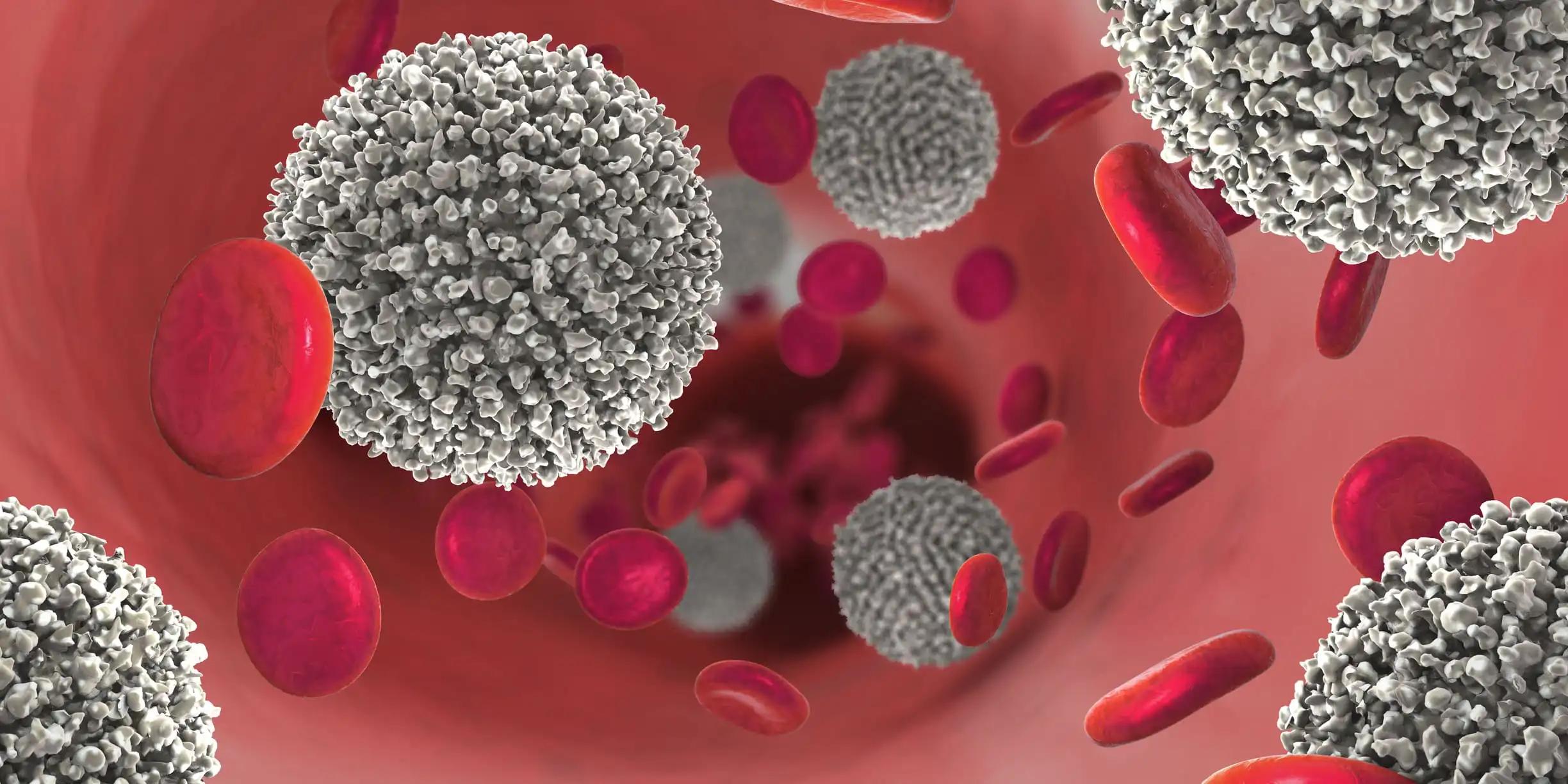KEY TAKEAWAYS
- The study aimed to investigate the role of 2-[18F]-FDG PET/CT, focusing on its semiquantitative and radiomics features, in detecting RT in CLL patients.
- Researchers noticed that semiquantitative PET/CT parameters and clinical factors, including the SUVbw combo, are valuable in predicting RT risk and OS in CLL patients.
Chronic lymphocytic leukemia (CLL) is a prevalent leukemia subtype, prone to progressing into aggressive lymphoma variants known as Richter transformation (RT).
Domenico Albano and his team aimed to analyze the role of 2-deoxy-2-[18F]fluoro-D-glucose positron emission tomography/computed tomography (2-[18F]-FDG PET/CT), incorporating semiquantitative and radiomics features, to identify RT and assess its impact on overall survival (OS).
Researchers performed an inclusive analysis involving 137 patients with histologically confirmed CLL. PET/CT images underwent qualitative and semiquantitative scrutiny, evaluating key metabolic parameters such as maximum standardized uptake value body weight (SUVbw), lean body mass (SUVlbm), body surface area (SUVbsa), lesion-to-blood-pool SUV ratio (L-BP SUV R), lesion-to-liver SUV ratio (L-L SUV R), metabolic tumor volume (MTV), and total lesion glycolysis (TLG). Additionally, radiomics variables, encompassing both first- and second-order features of the lesion with the highest uptake, were considered. The role of these parameters in predicting RT and OS was systematically analyzed.
About 95% of the 137 PET/CT scans revealed positive results, indicating elevated tracer uptake at the disease site, while the remaining 7 (5% ) scans were negative. Notably, SUVbw, SUVlbm, SUVbsa, L-L SUV ratio, and L-BP SUV ratio exhibited significant elevation in the RT group (P < 0.001 for all cases). Conversely, radiomics first- and second-order features did not demonstrate a significant association with RT.
Following a median follow-up of 44 months, 56 patients experienced mortality, with patients having RT exhibiting significantly shorter OS compared to those without RT (28 vs. 34 months; P = 0.002). Independent prognostic features for OS included Binet-stage, RT, and L-BP SUV R.
The study concluded that semiquantitative PET/CT parameters (SUVbw, SUVlbm, SUVbsa, L-L SUV ratio, and L-BP SUV ratio) are valuable in identifying high-risk patients for RT. Additionally, Binet-stage, RT, and L-BP SUV R emerged as significant predictors for OS.
This research received no external funding.
Source: https://pubmed.ncbi.nlm.nih.gov/38399491/
Albano D, Calabrò A, Dondi F, et.al (2024). 2-[18F]-FDG PET/CT Semiquantitative and Radiomics Predictive Parameters of Richter’s Transformation in CLL Patients. Medicina (Kaunas). 2024 Jan 24;60(2):203. doi: 10.3390/medicina60020203. PMID: 38399491; PMCID: PMC10889972.



